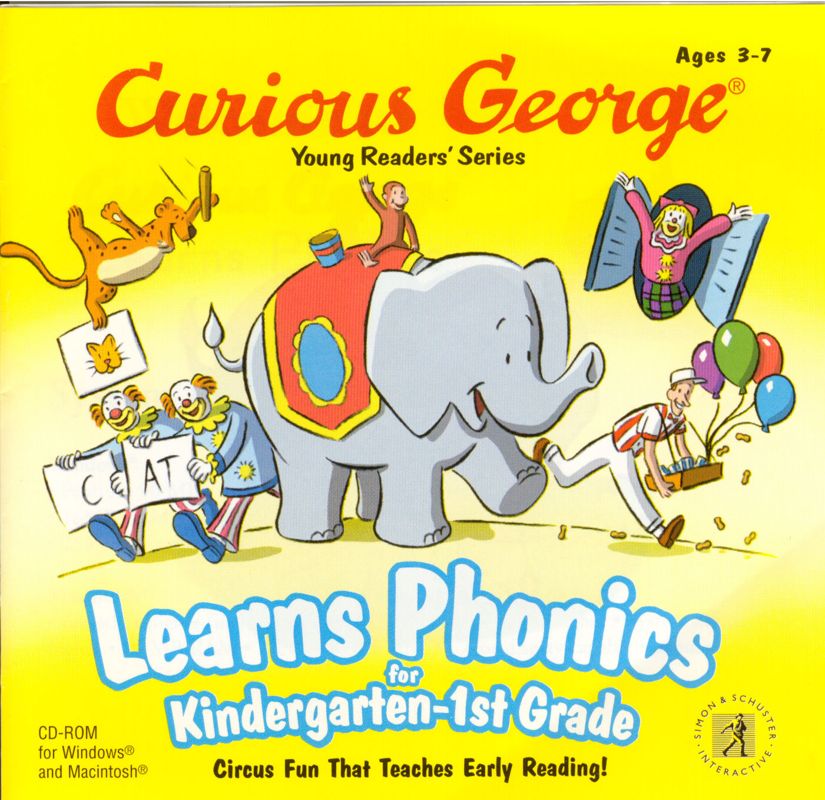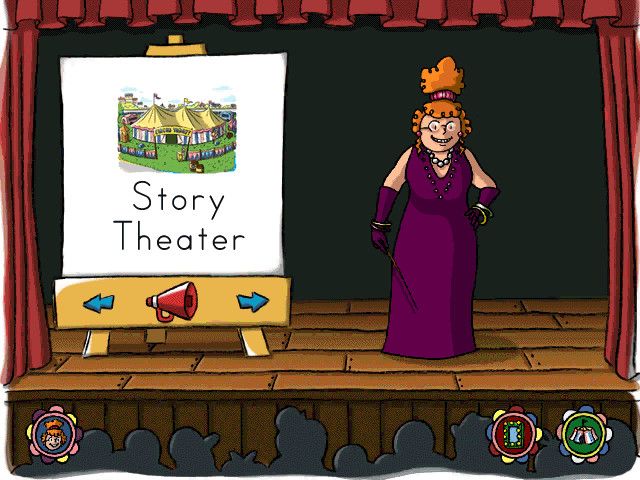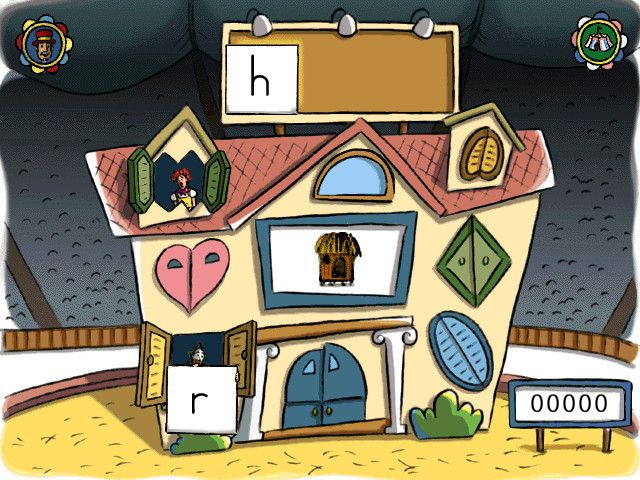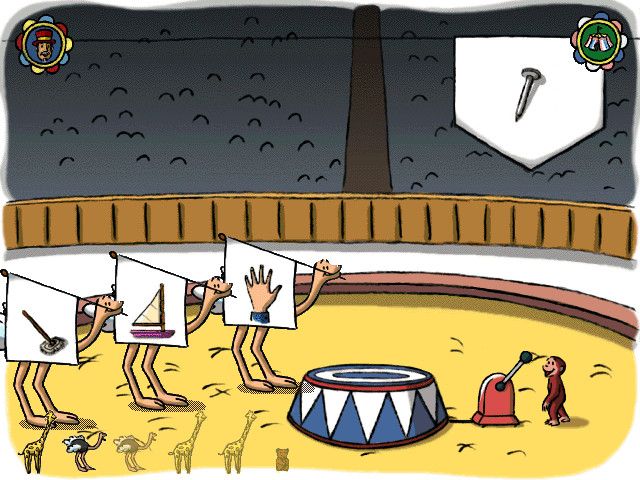Retro Replay Review
Gameplay
Curious George Learns Phonics delivers a playful blend of educational learning and lighthearted adventure as George explores a vibrant circus setting. From the main menu, six distinct activities invite young players to practice phonics skills through matching rhymes, identifying letter sounds, and assembling words. Each mini-game scales in complexity, ensuring that children build confidence before moving on to more challenging tasks.
In Animal Acrobats, players must quickly select the correct animal holding a rhyming or alliterative picture, reinforcing auditory discrimination and letter-sound correspondence. Fun House tasks children with dragging popping letters into place to spell the word shown, strengthening fine motor skills alongside phonemic awareness. Comedy Clowns turns word-ending recognition into a playful matching game complete with silly clown jokes, keeping the pace lively and engaging.
Sammy The Musical Seal focuses on vowel identification by having the child choose pictures containing a target vowel to activate musical horns, adding an auditory reward that motivates repetition. Peanut Pickup offers a light Pac-Man–style chase in which George rides an elephant, collecting peanuts while targeting vendors displaying a goal letter. Finally, Thea’s Story Theater encourages listening comprehension and vocabulary growth through narrated story scenes acted out by charming characters.
Across all activities, the game strikes a careful balance between challenge and encouragement. Immediate feedback—correct matches earn applause and animations, errors prompt gentle prompts—helps maintain a positive learning environment. Upon exiting, a printable certificate summarizing the player’s performance across activities provides a tangible reward that parents and teachers will appreciate.
Graphics
The visual style of Curious George Learns Phonics is warm, colorful, and appealing to early readers. Hand-drawn character art captures George’s mischievous personality and the circus backdrop is rendered with bright tent stripes, cheerful banners, and animated crowd reactions. Each mini-game has its own themed interface—polka-dotted fun house windows, a spotlighted clown stage, musical horns with glowing outlines—that keeps the experience visually fresh throughout.
Animations are smooth and expressive. George’s antics—his elephant ride in Peanut Pickup, his excited leaps in Animal Acrobats—add personality and humor that hold a child’s interest. Letter and picture assets are clear and bold, ensuring that even pre-readers can easily distinguish shapes and images. Sound effects, from honking clown noses to seal barks, are layered over upbeat music tracks that vary by activity to prevent monotony.
While the graphics won’t push the latest hardware, they excel at conveying educational content without distraction. All text appears in a large, readable font with high contrast against colorful backgrounds. Interactive elements—draggable letters, clickable animals, pop-up banners—highlight on hover or click, offering intuitive visual cues for young users. Even the printable certificate is attractively designed, featuring George’s silhouette and circus motifs that make the achievement feel special.
Story
Although Curious George Learns Phonics prioritizes educational activities, it weaves a light narrative thread to motivate progress. The premise is simple: George visits the circus, gets into his usual playful trouble, and discovers that learning phonics can be as fun as riding elephants and watching acrobats. This circus framework lifts what could be a purely instructional program into a playful adventure.
Each activity is introduced by a short, illustrated scene that places George in context—helping acrobats, exploring a fun house, or befriending a musical seal. These vignettes don’t carry a deep plot, but they provide a gentle sense of continuity and purpose. Thea’s Story Theater goes a step further by offering mini-stories that George and his friends act out, reinforcing narrative comprehension and encouraging curiosity about reading complete tales.
The absence of a rigid storyline works in the game’s favor, keeping the focus on self-paced learning. Players are free to hop between activities in any order, and the loose circus theme ensures that each task feels part of a cohesive world rather than isolated drills. Parents looking for an educational title with just enough narrative to feel like a mini-adventure will find this approach perfectly balanced.
Overall Experience
Curious George Learns Phonics stands out as a thoughtful educational tool packaged in an inviting, circus-themed adventure. The variety of mini-games ensures that critical phonics skills—rhyming, letter-sound matching, word assembly—are practiced in multiple contexts, reinforcing learning through repetition without feeling repetitive. Positive reinforcement through animations, sound cues, and the end-of-game certificate motivates continued play and learning.
Ease of use is a major strength. Simple point-and-click or drag-and-drop mechanics are accessible to preschoolers and early elementary students. Parents and educators will appreciate the clear learning objectives and the printable performance certificate, which highlights areas of strength and those needing further practice. The interface is intuitive enough that adult supervision can focus on encouragement rather than troubleshooting.
While the graphics and audio don’t rival high-budget entertainment titles, they excel at clarity and charm, which are paramount for a young audience. The game’s replay value is high: children can return to activities they enjoy or work on those they find challenging until they master each concept. For anyone seeking a wholesome, effective, and engaging introduction to phonics, Curious George Learns Phonics delivers a delightful overall experience.
 Retro Replay Retro Replay gaming reviews, news, emulation, geek stuff and more!
Retro Replay Retro Replay gaming reviews, news, emulation, geek stuff and more!









Reviews
There are no reviews yet.